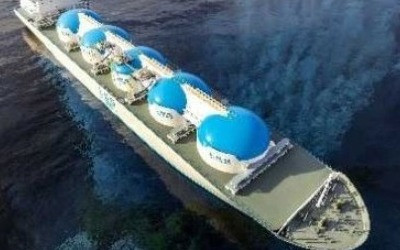July 15, 2020

The last few years have seen the role of digital networking in the war for the right talent come under increased scrutiny, and this has only intensified during the Covid-19 lockdown. With much of the world’s population confined to their homes during April and May – more than 3.9 billion people, – the internet has played a bigger, and even more crucial, role in our lives than ever. And with the unfortunate economic impact of the pandemic, it’s no wonder that professionals are turning even more to the internet to fuel their job search requirements.
While there are many different digital platforms and networks that can assist people in their search for their next ideal role, there is perhaps none mightier than LinkedIn. Boasting 690 million members across 200 countries and regions, the website is the go-to professional networking platform for hiring managers and recruiters in various industries all over the world.
Why you need a strong digital presence
For companies and search consultants looking to identify the market’s top talent, the internet is a vital tool. These professionals use the internet to do everything from searching talent pools, head hunting and identifying potential candidates to conducting screening assessments and interviews.
LinkedIn is the most-used social media channel by talent acquisition, executive search and hiring professionals. As 84% of recruiters are adapting their hiring processes to facilitate remote exchanges, we’re seeing a rise in the use of the already-popular professional platform to not only seek out jobs and candidates, but also network and create meaningful communities. LinkedIn can be used to build up a personal brand and become known as an industry thought leader, making candidates (both passive and active) much more likely to be sought out by specialist consultants.
According to LinkedIn’s own David Fitzgerald, Talent Solutions EMEA Account Director, digital presence for professionals is now more important than ever:
“Your LinkedIn profile is where you want to promote yourself in a way that makes you an attractive candidate to recruiters and employers. Be your authentic self and, along with your career progression, include elements that make you uniquely you, as these are the things that will really make you stand out,” he says.
In addition to LinkedIn, Twitter and Facebook can both be surprising sources of online professional networks, especially when using industry-specific hashtags or joining community networks. There are also specific online networking groups that provide resources and support, such as the Oil and Gas Council and the Energy Reinvented Community.
Key steps to enhance and optimise your LinkedIn profile
While LinkedIn is constantly updating its algorithm and recruitment professionals use a variety of different techniques to identify talent, there are several things you can do right now to boost the visibility of your profile within LinkedIn, and how appealing it is. The first is simply to keep your profile updated with your employment history – you can minimise the detail of irrelevant jobs or those from many years ago, but they’re still important to list to show potential employers and recruiters the full picture of your career. Then, follow the below tips:
Focus on your headline and job titles
LinkedIn’s search algorithms rank your profile’s headline and recent job title heavily, and search consultants are likely to include specific job titles in their search. This means it’s crucial to focus on these parts of your profile. With 120 characters to use in your headline, use this real estate wisely to communicate what you do, your specialisms and what you want to get from your career.
Use a professional photograph
LinkedIn members with a profile photo have 21 times more views than members who don’t have one. Choose a photo that is professional and reflects who you are. A head and shoulders shot of just you in work-appropriate attire and a neutral background tends to be best. A background photo (which sits at the header of your profile) will also help to gain attention and represent yourself.
Use keywords and industry specific terms
Keywords are not to be confused with buzzwords. The latter are overused to the point where they add no meaning to profiles – for example, ‘specialised’, ‘experienced’, ‘creative’, ‘ambitious’ - while keywords are industry-specific and add SEO value to your profile. Often consultants will enter a search phrase into LinkedIn, looking for specific qualifications, knowledge of systems and procedures or tenure in related companies, so think about the keywords specific to your industry and add these into your profile. These are particularly useful to add to your headline or job title.
Add skills and endorsements
Candidates with verified skills are around 30% more likely to be hired. On LinkedIn, an easy way to corroborate your skills is by seeking endorsements from your connections. Use LinkedIn’s tool to add specific skills to your profile (for example, project management, systems architecture or collaboration) and reach out to connections to ask for endorsements and recommendations. If you list more than five skills on our profile, you’re 27 times more likely to be discovered by consultants in searches.
Be active
In the current employment landscape, simply having a LinkedIn profile is not enough. To really generate interest, you need to use your digital presence to generate discussion and position yourself as an industry participant, if not leader. Proactively look for relevant industry connections, including old colleagues, recruitment consultants and professionals you look up to within your specialism, and ask to add them to your network. Join active groups, such as Oil and Gas Industry People or Engineering People of Oil and Gas, to be connected to likeminded professionals and start sharing relevant updates and discussion. Create status updates to showcase your own thoughts or ask questions of your network, and share news and updates from the industry to provide a snapshot into your professional life.
Let Petroplan help you make your next career step
A well optimised LinkedIn profile can help you stand out to recruitment professionals and hiring managers, but that’s just the first step to securing your next role. For expert assistance within the oil, gas and energy sector, look to Petroplan to help you find your next role. View our latest oil and gas jobs or contact us to see how we can help.






You can also use your social account to sign in. First you need to:
To connect your social account you must Acknowledge the Terms & Conditions and Privacy Policy